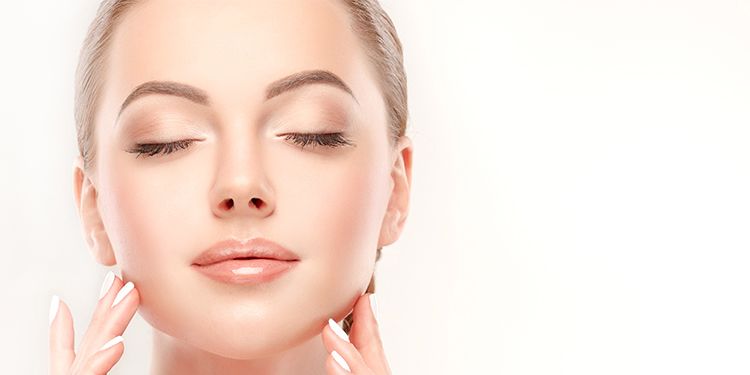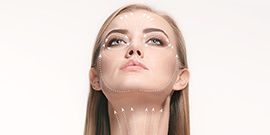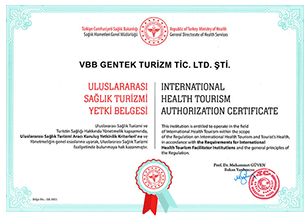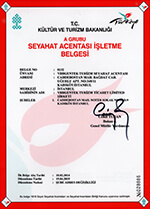Skin Rejuvenation With Stem Cells
We age because our cells begin to die at a certain age. Is it possible to rejuvenate the skin by giving back these cells to the skin?
What keeps the skin young?
Connective tissues give a young look to our skin and hold it upright, while tissues producing collagen provide skin quality. These tissues are comprised of cells called fibroblasts.
The percentage of these cells is 100% until about 28-30 years of age so our skin looks young at that age.
When and how does the skin begin to age?
Aging on our skin starts at 28-30 years of age. The reason is that connective tissues and fibroblast cells generating collagen start to die by 2% each year. Assuming that it starts in our 30s, by the time we reach 40, we lose 20% of fibroblast cells in our skin, which means we lose 20% of connective tissues, which keep our skin uplifted, and of collagen, which gives skin quality, in other words, of the youth of our skin.
Lines, sagging and signs of aging begin to apper.
Fibroblast cells are cross-linked to each other like a net. When these cells begin to die, the net begins to break; in short, the connective tissue begins to descend. The collagen-producing tissues are also deformed and our skin easily wrinkles and assumes an older appearance. Because cell death continues as our age progresses, our skin increasingly looks older.
Is it possible to restore and sustain young skin with stem cell therapy?
It is possible to replenish fibroblast cells, which keep the skin young and decrease in number with aging, and restore and maintain youth by regenerating fibroblast cells in Stem Cell laboratories approved by the Ministry of Health.

How is skin rejuvenation with stem cell treatment performed?
First, fibroblast cells should be collected from the skin. A small piece of biopsy (4-6 mm) is removed by a specialist from the region behind the ear without deforming the appearance of the region. The piece removed is then sent to a stem cell laboratory approved by Ministry of Health for generation of fibroblast stem cells under specified conditions.
As a result of the culture (within 4-6 weeks), fibroblast stem cells are replicated. The specialist transfers the new cells to regions where the cells have died by injection method. This procedure is repeated 3 times in total 30-45 days apart after the stem cells are generated in the laboratory.
To which regions can it be applied?
- Face: It provides rejuvenation by removing wrinkles and lines, skin laxity due to decreased collagen and elastin fibers associated with aging as well as spots and acne scars.
- Neck, Jowl and Cleavage: It treats wrinkles, sagging and spots in this area due to aging related loss of skin and subcutaneous tissue.
- Hand: It removes vascular appearance and spotting, which result from decreased subcutaneous tissue and skin laxity over time.
Who can have stem cell skin therapy?
Anyone with unwanted wrinkles, laxity, sagging, spots, scars on their skin can have this treatment. Since the stem cells used in the treatment are removed from the person himself/herself, the procedure has no allergic reactions or side effects. It has no age limit.
Benefits of stem cell skin therapy
The most important aspect of stem cell treatment applied to the skin is to replace what is missing and repair the tissue. When we're young, we have adequate number of cells in our body but over time, the number of cells decreases regionally. In response to this, the main feature of stem cell therapy is that it is a youth elixir obtained from our own body that increases the number of stem cells in the target region.
How long does stem cell skin therapy take?
In the first stage, the removal of tissue to be sent for stem cell generation takes a maximum of 15 minutes. It takes 30-45 days for the cells to grow in the stem cell laboratory approved by Ministry of Health. The first application is performed 30-45 days after the removal of tissue, and the other 2 applications are about 1 month apart. Each application takes about 1 and a half–2 hours.
Can I resume daily activities immediately after having stem cell skin therapy?
You can resume daily activities immediately after the application.
For how long has this method been in use worldwide and in Turkey and how is it applied?
This method was discovered in the world in the 1960s. It's recognized worldwide as the only method that provides rejuvenation by replicating and replenishing dying cells as a result of aging.
This method, which is FDA approved in the USA, has been applied to hundreds of thousands of people in many European countries for 17 years.
In Turkey, this method applied by generating these cells in stem cell laboratories approved by the Ministry of Health has been applied to thousands of people since 2016.
What are the effects of initial application of stem cell skin therapy?
Each application consists of taking a biopsy and a total of 3 courses of injections about 1 month apart. Then, the process of proliferation and activation of cells under the skin begins. The desired effects become visible approximately 1 year after biopsy. The number of fibroblast cells which the skin can accept in 1 year is the number of fibroblast cells that died over 8-10 years. No matter how many cells you give within 1 year, you cannot change the self-repair speed of the skin and the skin can be rejuvenated by a maximum of 8-10 years in 1 year.
Is it possible to repeat the procedure?
Fibroblast Stem Cell method is capable of rejuvenating the skin by a maximum of 8-10 years in 1 year. On the other hand, as the aging process continues, the cells continue to die at the rate of aging. But the advantage of this method is that it can be applied again after 1 year to give the skin the amount of cells that died over the course of 8-10 years.
What are the risks of stem cell skin therapy?
In this Ministry of Health-approved method, the patient is only given fibroblast cells derived from their own tissue without any added foreign material so these cells cannot turn into another cell. Since no foreign cell is administered, after it was demonstrated that it does not turn into a cancer cell, the method was approved by the FDA.
When do the effects of stem cell skin therapy become visible?
The self-repair process of the skin takes place slowly so the maximum effect is achieved 9-12 months later. In some patients, this process may take up to 18 to 24 months.
Is it likely to have an unnatural look after the treatment?
Gestures and mimics do not change after treatment. The patient does not lose their expression. S/he won't have any unnatural look.
Is facial stem cell treatment used for rejuvenation purposes only?
It's a method used not only for rejuvenation but also for the treatment of cutaneous and subcutaneous skin problems such as acne-scar pit, sunspots, large pores, cuts and scars, sagging skin, etc.
Which stem cell is used on the face, other than fibroblasts?
Stromal Vascular Fraction (SVF)
In the past, stem cells were thought to be located only in the bone marrow. However, it was discovered that the number of stem cells in adipose tissue is 4 times the number in bone marrow.
How is stem cell obtained from adipose tissue?
To obtain SVF stem cells from adipose tissue, fat is collected from the patient by liposuction method and sent to a stem cell laboratory approved by the Ministry of Health, where it goes through various procedures, and finally SVF is obtained.
What types of cells does SVF contain?
SVF stem cells contain many different types of cells present in adults. Some of these are: mesenchymal stem cell with the ability to be transformed into different cells, endothelial stem cells, which can treat the vascular system, hematopoietic stem cells, which can be used to treat blood diseases, keratinocytes, which can be used in the treatment of skin surface region, fibroblast stem cells, which form the connective tissue in the skin, and many other types of stem cells.
What are SVF's areas of use?
SVF stem cells, which have also been used in esthetic surgery recently, are used to prolong the life of fat fillings applied to face and breast and thus a permanent filler is obtained from a person's own fat. A permanent fat filler allows all filling procedures to be performed.
It can also be used in treatment of burns and some skin problems such as non-closing wounds.
How are deep acne scars and surgery scars treated?
Keratinocyte Cell (Upper Skin Cell)
In cases where the upper skin is damaged such as very deep acne scars, scars or surgical scars, it is possible to produce only the upper skin and give it to the desired area. In today's technology, all layers of the skin can be produced in stem cell laboratories.
The epidermis is the outermost layer of the skin. It consists mainly of cells called "keratinocytes". In order to restore the epidermis layer that is lost in the case of very deep acne scar spots or suture marks caused by caesarean section, it is also necessary to treat the outer layer of the skin.
In treatments performed for this purpose, after keratinocyte cells are replicated in Ministry of Health-approved stem cell laboratories, they can be injected to the patient's necessary region by the doctor using a special method in 3 sessions 30-45 days apart.
Frequently Asked Questions
What is the difference between fat injection and stem cell-enriched fat injection?
A more permanent filler can be obtained when the fat removed by liposuction from a person is enriched with stem cells obtained from that person's own fat in special laboratories. If this is not done, most of the transferred fat filling is completely absorbed by the body.
Is there an age limit for stem cell treatment applied to the face?
Since the procedure has no side effects or risks and the person's own stem cells are used, it has no age limit.
How long does the effect of stem cell treatment applied to the face last?
With stem cell therapy, a maximum skin rejuvenation of 8-10 years can be achieved at the end of 1 year. On the other hand, the aging process continues naturally from the point reached and the cells continue to disappear at the rate of aging. If desired, the treatment may be repeated at least one year after the procedure and the amount of cells depleted for 8-10 years may be returned to the skin once more.
Does the procedure have side effects?
Since it is a treatment method applied using the person's own stem cells without adding any additives, it has no side effects.
Differences between stem cell treatment applied to the face and filling procedure
Depleted cells are restored with stem cell therapy and rejuvenation with a structure matching the original is ensured. Therefore, the effect of stem cell treatment is a good option compared to non-permanent filling procedure. When the aim is esthetic reshaping of
any facial region, filling is preferred.
Is it possible to apply stem cell therapy to lips?
Stem cell therapy can be applied to the lip region as well as to all parts of the face. As years go by, signs of aging begin to appear in lips, as they do in the rest of the body. Lips become thinner and lines and wrinkles begin to form around them. Stem cell therapy helps to resolve these effects.
How much does facial stem cell treatment cost?
For a price evaluation, the patient should first consult the specialist and have his/her condition examined. Our preliminary consultations are free of charge.
What is the difference between PRP and Stem Cell Therapy?
In PRP, blood collected from a person is separated into its components by a special centrifugation process and the growth factors obtained are applied to the skin of the patient. In the stem cell method, depleted stem cells in the skin are restored after the
patient's own cells are replicated in special laboratories. Therefore, a more effective and permanent improvement is acheieved.
Related Content
Nano Fat Grafting
Nano Fat Grafting is a very successful method in order to eliminate the volume losses on our face with aging. It can be applied to under eye, cheek, forehead, chin and other[...]
Read MoreFrench Lift
Over time, the human face begins to fail in preventing the effects of gravity and aging. Due to loss of collagen and elasticity and weakening connective tissue, the face[...]
Read More






